

Silk: Chinese thread
Silk fabric is a Chinese specialty and, for a long time, China was the only country in the world that could produce and make use of it. Among all the countries in the world that farm silkworms, their silk worm sand farming methods were all either directly or indirectly imported from China.
When mentioning silk, we have to begin with the history of the domesticated silkworm, which began a very long time ago. Evidence of this has been uncovered from various sources, such as a halved silkworm cocoon, discovered by archaeologists at a Neolithic site at Xiyin Village in Xia County, Shanxi Province, which dates back to over 5,000 years ago. A silk ribbon from 4,700 years ago, measuring 0.5cm in width and consisting of 16 interwoven silk threads of different thicknesses, was unearthed at the Neolithic site of Qianshanyang in the Wuxing District of Huzhou, Zhejiang Province. Although already carbonized, its warp and weft are still visible. There were vivid and accurate depictions of silkworms on black pottery from about 2,500 BC unearthed at sites in Meiyan of Wujiang, Jiangsu Province, which reflect people’s familiarity with silkworms back then; and among the oracle inscriptions of the Shang Dynasty from over 3,000 years ago are found not only pictographs of silkworm, mulberry, silk and silk fabric, but also descriptions of sacrifices to the god of mulberry and sericulture inspections.
Silkworm farming techniques gradually improved by trial and error and, before the Xia Dynasty (21st-17th centuries BC), people in China were already able to select suitable silkworms to domesticate from the wild population. During the Zhou Dynasty (11th century-221BC), people learnt to bathe silk worm eggs in February and start raising silkworms in March and were knowledgeable about the process of silkworm metamorphosis and farming implements. From the Western Zhou Dynasty (11th century-771 BC) to the Spring and Autumn Period (771-476 BC), people advocated the practice of raising silkworms once a year to avoid the overconsumption of mulberry leaves which might damage the trees. During the Warring States Period (476-221 BC), people had realised that silkworms had no gender, but the moths did, and that they could not stand very high temperatures but were fond of a certain degree of humidity. In his Ode to Silkworms, Xun Kuang (310-235 BC), a great thinker, insightfully stated: “The young undergo inactivity and activity three times before they mature”, referring to the fact that silkworms are able to build cocoons after three moultings. During the Wei, the Jin and Northern and Southern Dynasties (220-589), there were great improvements in techniques for silkworm egg selection and breeding. In the Ming Dynasty (1368-1644), people attached great importance to the selection of silkworm eggs and the improvement of the breed. They would use limewater and salty brine to bathe the silkworm eggs in order to eliminate inferior stock. They also realised the advantage of creating hybrids pecies of silkworms and sought to take advantage of this knowledge.
Among all the countries in the world that farm silkworms, their silk worm sand farming methods were all either directly or indirectly imported from China: Korea from 3,000 years ago; Japan and Vietnam 2,000 years ago; Central Asian countries 1,600 years ago; Europe 1,400 years ago; and South America 400 years ago…
Textiles
Silkworm farming directly promoted the development of new weaving techniques, which became uniquely Chinese in terms of silk weaving.
When placed in hot water, silkworm cocoons will gradually become soft and pulpy. Later, the outer layer of the cocoon will fall off and one end of the silk thread will appear. People would then draw the silk from the cocoons to make silk fabrics. The silk thread drawn from one cocoon can be 1,000 to 3,000 metres in length and once it is woven, the silk can be made into silk fabric. Most of the silk fabrics are woven before they are dyed, but for high-end silk products, the silk can be dyed first.
During the Spring and Autumn Period (770W-476 BC) and the Warring States Period (476-221 BC), agriculture became more developed and the economy was characterized by men tilling the land and women weaving cloth. Planting mulberry trees and flax plants and engaging in weaving were typical social economic scenes of the period. Back then the silk spun from cocoons were already of high quality as the fineness and uniformity of the fibre were comparable to those made by modern techniques. In 1982, over 20 pieces of priceless silk clothing from the Warring States Period were unearthed in Tomb No. 1 at the Mashan Brickworks, Jiangling, Hubei Province, which included embroidered unlined garments, unlined garments made of embroidered juan (thin, tough silk), padded tops with the outer surface made of silkbrocade, padded gowns made of embroidered juan, and lined tops made of juan. Among them was an unlined top made of silk mesh embroidered with Chinese dragon, phoenix and tiger patterns. Not only was the mesh evenly woven, the fabric itself was light with extreme fine embroidery. Epitomising the feudal society at the time, these garments represent the social reality in which “if a man does not farm, someone will starve; if a woman does not weave, someone will feel the cold.”
Chinese textile technology improved further during the Han Dynasty (206 BC-220 AD). Among the silk fabrics excavated from the Han tombat Mawangdui, Changsha, Hunan Province, were two pieces of clothing that were surprisingly thin, one only weighing 49 grams while the other only 48 grams. Measured by traditional units of weights, they weighed less than one liang (50 grams). Since the two pieces of clothes were made of silk gauze without colour or lining, they were named “unlined top made of white gauze”. A story recorded in an ancient Arabian travelogue gives us an idea of the thinness of this kind of fabric. An Arabian merchant once visited a Chinese government official. As they were talking, he kept staring at the official’s chest, which made him rather selfconscious, so he asked: “Is there something wrong with my chest?” The trader answered: “Chinese clothes are so amazing! How is it possible that I can see the mole on your chest through a layer of clothing?” The Chinese official laughed and rolled up his sleeve: “I’m not just wearing one layer. As you can see, I have five layers on.”
Although silk is made by the labouring class, in ancient times it was very difficult for the producers to enjoy the fruits of their labour. Silk was usually used for making specific types of clothes, the most representative of which were the Emperor’s Dragon Robe and the courtiers’ official robes. Only the officials and nobles had the privilege to wear silk clothes while the common people were only allowed to wear plain clothes made of coarse linen and cotton. Later, as the economy in China developed, in areas such as Jiangsu and Zhejiang where large quantities of silk were produced, some rich common people and merchants began to wear silk clothes.
For thousands of years, silk production was as important as grain production. Silk weaving and embroidery were the most widespread handicrafts in both urban and rural areas and were even more common than tea cultivation and porcelain making. With the development of cutting-edge dyeing and printing techniques, the pure plain silk began to take on a diverse range of colours and patterns, becoming the finest material to match the majesty of feudal emperors, princes, generals and ministers in addition to complementing female beauty.
Cities of silk
Because of silk, many Chinese cities such as Suzhou and Chengdu have not only prospered but also been associated with specific types of beautiful silk fabrics. Brocade is a textile material made of multi-coloured silk created with a raised pattern. When mentioning brocade, people would often relate it to the Song Dynasty (960-1279). Since it was produced mainly in Suzhou, it became known as the Song brocade of Suzhou. The Song brocade had gained the prestige of the “crown brocade of China” for its superb colours, delicate patterns and soft but durable texture. Among the items in the Palace Museum collection is a rare Chinese tapestry named Elysium made of thick brocade from the Qing Dynasty (1644- 1911), which for over 300 hundred years has been held in storage and never been exhibited. It is said that this single two-metre long brocade scroll depicts 278 Buddhist figures showing various mannerisms surrounded by lofty palaces, propitious curling clouds, exotic flowers and rare herbs, all of which serve to demonstrate the supreme artistic techniques of the Song brocade.
From the Three Kingdoms Period (220-280) onwards, Suzhou has always led the way in silk production. During the Tang and Song Dynasties, Suzhou became China’s centre for silk production. It was said that the silk produced every two weeks in Suzhou could be used to pave the Silk Road from Chang’an to Rome. In the Ming Dynasty, Suzhou had already become a major city in southern China and most of the highend silk products for royal use were manufactured there. During the reign of Emperor Qianlong (1735-1795), there were 12,000 silk looms in the city of Suzhou and over 100,000 people in the city worked in the silk trade.
Chengdu, alias Shu, was another city of silk. The Shu brocade from Chengdu, the Song brocade from Suzhou, and the Ming Yun brocade from Nanjing were known as the three most famous brocades. “As dawn light sends sparkles to dews ofred pedals,/the brocade city is decked with sweet blooms.” During the Han Dynasty, Chengdu was already wellknown for its brocade. In the Tang Dynasty, large amounts of raw silk produced in surrounding cities flowed into Chengdu continuously, contributing to the further development of the trade in Shu brocade. It was said that for her wedding Princess Anle (684-710) in the Tang Dynasty wore an imperial dress made of single-thread silk mesh that was magnificently colourful and embroidered with intricate classical patterns. It was described as “light as a floating cloud and lustrous as the morning glow”. In the Shoso-in Treasure House and the Hōryū-ji Temple in Japan, there are collections of Shu brocade fragments from the Tang Dynasty such as Shujiang Floating Streamers and Shujiang Crown Prince’s Umbrella. During the Southern Song Dynasty (1127-1279), the Chengdu Brocade Workshop produced even more styles of fine brocade and various brocade quilts, with an even more diverse range of colours and patterns.
Art influenced by silk
The characteristics of silk have also exerted a great deal of influence on Chinese art. No other fabric hangs as well as silk–the folds of a silk dress seem to flow to and fro at will. In the well-known paintings An Ode to the Goddess of River Luo and Illustrations of the Court Instructress’ Admonitions by Gu Kaizhi, a renowned painter in the Eastern Jin Dynasty (317-420), the dresses worn by the goddess and courtier maids perfectly exhibit the elegance and gracefulness of the silk. Chinese artists also like the ethereal flow of silk garments. The frescos painted by Wu Daozi, the “divine painter ”of the Tang Dynasty, with his style of painting “flowing dresses of celestial beings”, make viewers feel as if everything in the fresco was moving. The figures in his paintings are either standing in the wind or flying through the sky, wearing long, loose and comfortable silk dresses billowing in the wind. Their elegance and gracefulness portrayed ina variety of poses seems to create an artistic paradise. The socalled “Wu’s billowing dresses” showcase exactly the ethereal feel of silk garments.
Brocade and satin are as splendid as rosy clouds, silk gauze is as translucent as a cicada’s wings. The four best-known types of embroidery, namely Hunan(Xiang) embroidery, Guangdong embroidery, Sichuan (Shu) embroidery and Suzhou embroidery, are famous for their extremely intricate patterns; brocade, satin, damask and mesh, each has its own peculiar beauty; silk tapestries of paintings and calligraphies made with the kesi technique (in which decorative patterns or figures are woven with fine silk and colour threads, and a piece of textile comes into being when the patterns or characters are finished) often surpass the originals in aesthetic effect… Looking back on the history of silk, we cannot help but wonder at the brilliance and wisdom of the working people.
The Silk Road
Beginning in the Han Dynasty, Chinese silk products began the longest and most varied journey in human history, travelling across the Gobi Desert through Central and West Asia and across vast oceans through South Asia to reach the Mediterranean and the coast of East Africa, creating the longest serving trade route ever. Among the goods traded on the route, silk was not the only commodity but it was the most representative, hence the name Silk Road. Overland and through the maritime Silk Road, Chinese silk products were continuously transported to Central Asia and Europe and became a luxury textile in high demand. They were hailed as “Heavenly objects”. As a result, the Greeks and Romans called China “Serica”, the Nation of Silk.
The Silk Road served not only as a trader out econnecting Asia and Europe in Ancient times, but also as a bridge of friendship facilitating cultural exchange between East and West. At that time, European nobility wore Chinese silk garments and used chinaware as a symbol of status and wealth. Meanwhile, many specialty products from other countries were continuously brought into China by the traders, including raisins, peppercorns, glassware, blankets, musical instruments, music and dance, goldsmith and silver smith techniques, Buddhist sculpturing techniques, etc. Technology, culture, arts and religions from countries in the Western regions also gradually influenced Chinese culture of the Central Plains.
 Published in Confucius Institute Magazine
Published in Confucius Institute MagazineMagazine 43. Volume 2. March 2016.
View the PDF print edition






















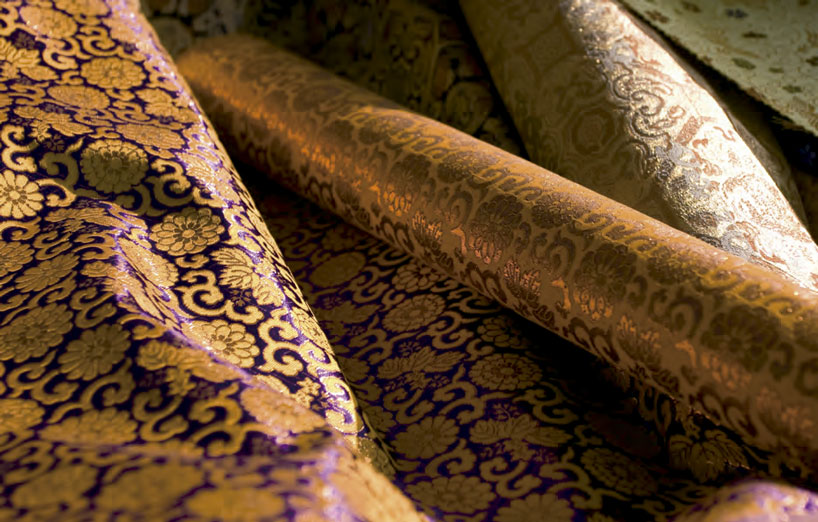
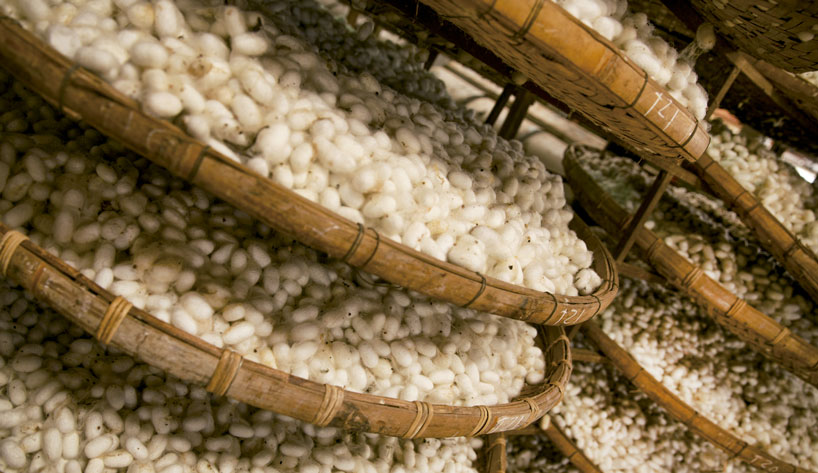
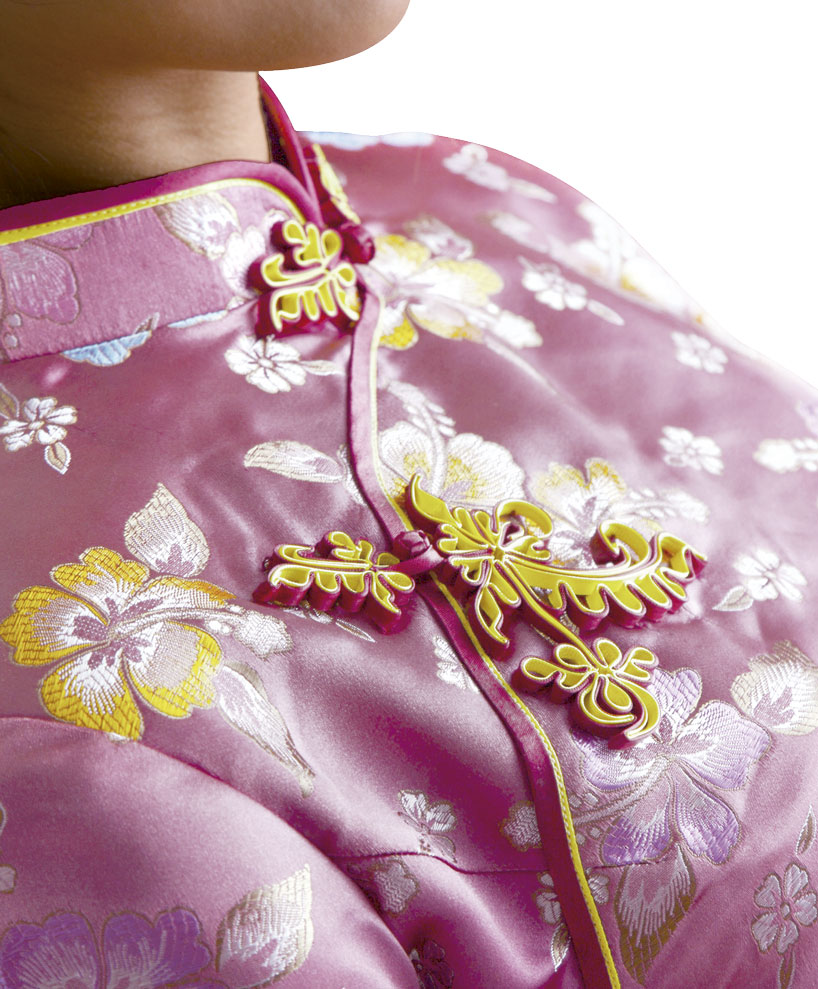


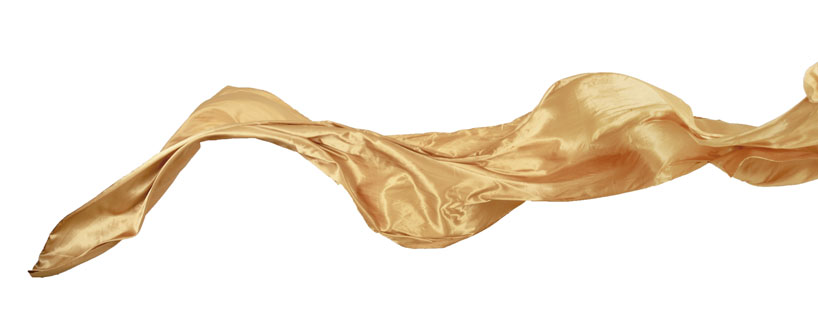
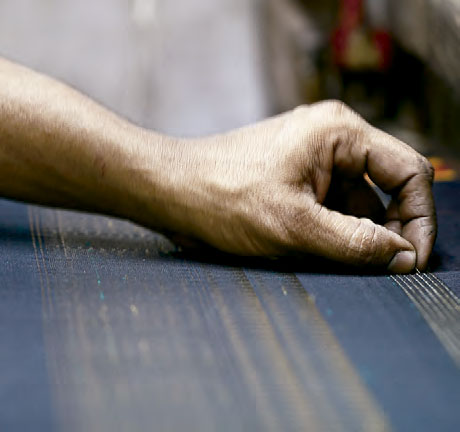
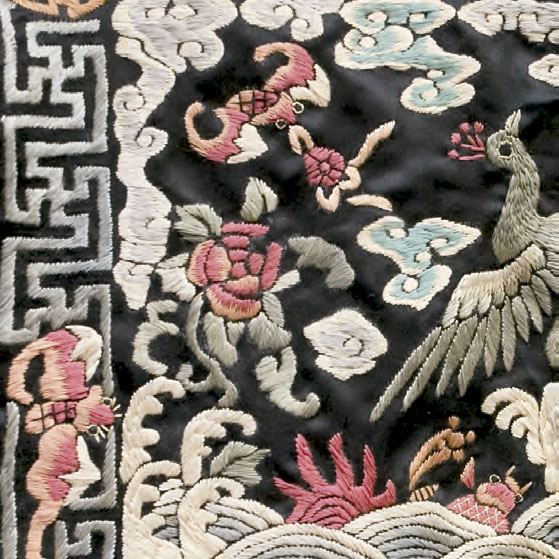
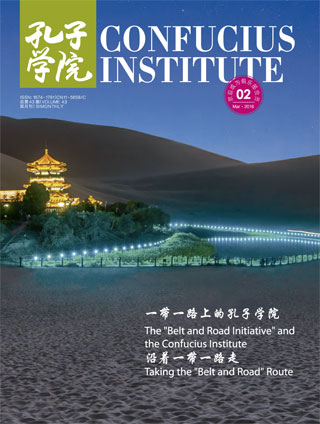
No hay comentarios:
Publicar un comentario